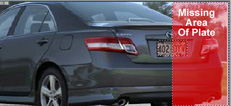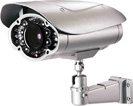Hardware Components for Successful License Plate Recognition.
Even with the best algorithms, a successful license plate recognition deployment may require additional hardware to maximize accuracy.
Such components include:
Camera with a fast shutter speed to reduce motion blur - A high speed vehicles may require a cameras with a faster shutter speed to compensate for a vehicle's velocity. Camera shutter speeds of 1/1000 sec may be necessary.
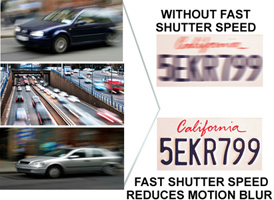
Eclipse camera - Deployed to reduce the headlight glare and reflected light from a vehicle. An eclipse camera is able refract the light toward the vehicle where it can be used to produce a clear image.
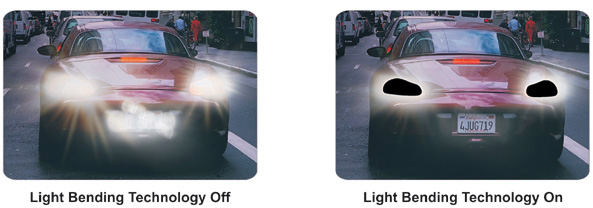
Infrared Night Vision Cameras - During areas of low light or in areas of total darkness, infrared cameras are used.
While the human eye can not see in total darkness, a night vision camera is able to see in complete darkness, 0 LUX, without any light. Night Vision Cameras see beyond what the human eye can see because they see in the infrared spectrum. The human eye can only see in the visible light spectrum which is 400 - 700 nanometers.
-
Around the camera are diodes, called LED's that emit Infra Red light.
-
A special chip inside the camera is able to see the detected infrared radiation.
-
This chip is able to convert the infrared radiation into a visible picture that the human eye can see.
Infrared illuminator - In certain conditions, an infrared camera will require additional infrared illumination because the standard led's on a night vision camera may only work for 15 to 30 ft.
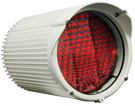
(shown Industrial Videolarm Ir Illuminator)
To increase this distance to say 100 to 1000 ft, an infrared illuminator is deployed. This hardware unit consists of a series of focused led's that are used adjacent to night vision cameras for longer distance viewing. The led light emitted has a slight glowing appearance.
Infrared illuminator - In certain conditions, an infrared camera will require additional infrared illumination because the standard led's on a night vision camera may only work for 15 to 30 ft.
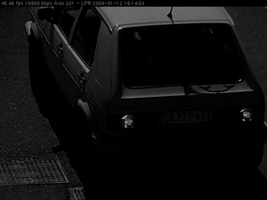
Shown is a Car at Night With No IR ILLUMINATOR

Shows is the same picture (CROPPED) with a high Power Illuminator. The License Plate Is Readily Visible from the Infra Red Illuminators, and combined reflective properties of the License Plate Material.
Earlier License Plate Recognition
Up until recently, systems were confined to technological restrictions in CPU and memory. Such systems consisted of an architecture that typically captured video footage of vehicles first, stored it and later analyzed it. After a specified time period, say 48 hours, the video was processed and the license plates were later deciphered. Such systems were implored early on because of the sheer size of data coupled with slow processing speeds.
Current License Plate Recognition Systems
Current LPR Technology captures license plate images while simultaneously doing an alpha numeric conversion of the captured plates. Recent changes in computer processing power and memory combined with lower price points for economies of scale have allowed for real time processing of license plate recognition systems. The benefits of real time processing have opened up advancements in just about every industry possible. Such systems allow a wealth of supporting applications to be done.
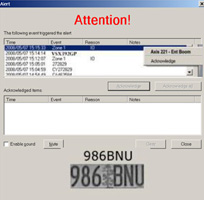
Characteristics of a high-quality License Plate Recognition System
Given nearly five decades of evolution, the latest commercially deployed license plate recognition systems should incorporate the latest algorithmic technology. Such systems using the current 2009 year standards should be able to accomplish the following:
- Achieve a high accuracy rate of 95% or greater
- Fast processing time
- Tolerant to distortion and blur
- Support high speed vehicles
- Support multiple license plates formats
- Supports license plates from multiple geographic regions
- Can be integrated with Access control and integrated I/O modules
- Can be integrated with standard CCTV systems
- Can be integrated with 3rd party applications
- Supports analog as well as progressive scan IP cameras
- Supports Megapixel cameras
Applications using Licensee Plate Recognition:
Law enforcement - Up to several thousand license plates per hour can now be detected just by having an officer drive a police car in a parking lot, on the street or on the freeway. No manual entry required.
(1) Police vehicles now have cameras mounted on the hood of police cars.

(2) Officers only need to drive the police car and pay attention to their driving.
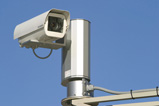
(3) No manual entries of license plates on a computer are necessary.
(4) The automated system actively grabs multiple license plates per second where they are cross referenced and checked against a central database.
(5) As soon as a bad plate is detected, the officer is immediately notified by an alarm.
(6) Bad plates, Stolen Cars, Unpaid parking tickets, Expired registration, etc, are discovered within seconds.

Access Control- License Plate recognition systems can now be easily tied into standard access control systems
- (1) Tenants drive up to the front of their building's entry gate.
- (2) The gate opens based on the preprogrammed license plate in the system's database.
- (3) Tracking of all vehicles that enter and exit the building's premises is logged, including the date, time and license plate number.
- (4) A photo of the vehicle and driver is also captured.
License Plate recognition offers a better solution and a means to reduce unauthorized vehicles access, crime and increase safety.
Parking Services
Whether parking services are for vehicles that use monthly parking passes or require daily parking tickets, a vehicle's license plate can be used to better automate parking services and reduce the administrative aspects that accompany it. Airport Parking, Concert Parking, Valet Parking, Event Parking, are all now starting to use license plate recognition systems to boost efficiency and cut overhead.
Current License Plate Recognition Systems
Current LPR Technology captures license plate images while simultaneously doing an alpha numeric conversion of the captured plates. Recent changes in computer processing power and memory combined with lower price points for economies of scale have allowed for real time processing of license plate recognition systems. The benefits of real time processing have opened up advancements in just about every industry possible. Such systems allow a wealth of supporting applications to be done.

- (1) Vehicle Enters parking lot.
- (2) Driver takes ticket and gates open

(3) License Plate Recognition System captures full log of the vehicle's license plate, date of entry and photo of the vehicle.

(4) Upon vehicle exit, system can calculate all parking fees and automatically open the gate.
Additional Parking Security Measures to reduce theft.

(5) Owner of vehicle can receive an SMS text message and photo, to his/her cell phone whenever the vehicle leaves the parking lot.
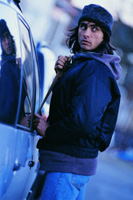
(6)Car theft is nearly eliminated.
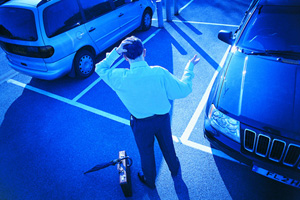
Toll Booths - License Plate Recognition is used to automate tolling.
(1) A vehicle enters the toll
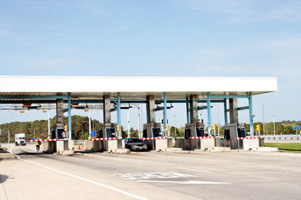
(2) Vehicle's license plate is grabbed and immediately cross referenced
(3) Registered Monthly Service Users are verified
(4) Day to day users are logged
(5) System is able to facilitate with payment.

Speed Enforcement
Infrared illuminator - In certain conditions, an infrared camera will require additional infrared illumination because the standard led's on a night vision camera may only work for 15 to 30 ft.
Several thousand Photo Radar Red Light intersection cameras have been deployed throughout the United States. Sharp reductions in car accidents have been reported immediately after deployment of such systems, leading to their success.

Additionally, revenue generation incurred by local municipalities has also created a motivation to install such systems.
Next Generation Photo Radar Red Light Cameras
Newer Red Light Camera systems incorporate license plate recognition technology that have automated the entire process. All license plates are automatically captured eliminating the need for human intervention and manual inspection of license plates. In order for license plate technology to be used as part of a photo radar system, only newer systems with high accuracy algorithms are considered. Older or less refined systems have error rates that are too high and can pose barriers.
Emergencies
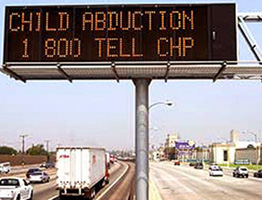
AMBER Alert
America's Missing: Broadcasting Emergency Response or AMBER Alert, is a public notification that a child abduction has occurred. Such announcements are disseminated via television, radio, Internet and electronic traffic signs. Current systems are highly contingent on the public to report sights.
Amber Alert Partial Plates
Often times, a witness in a crime scene or an accident is only able to report a partial license plate. Newer designs in license plate recognition algorithms are able accept, track and locate partial license plate algorithms within their database watch lists to maximize results.
